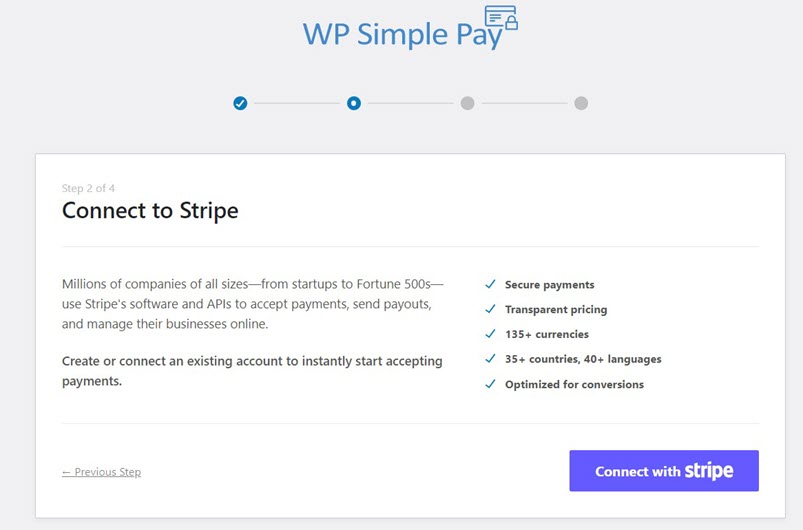How to Easily Set or Change the Currency in Stripe With WordPress
Last updated on
Are you accepting online Stripe payments on your WordPress site? Stripe allows you to accept payments in 135+ currencies. By setting a currency that’s relevant to your target audience, you can avoid conversion costs for your customers.
In this article, we’ll show you how to easily set or change the currency in Stripe with WordPress.
Here’s the payment form we’re going to create with this tutorial. You can see that we’ve added 3 different price options with different currencies:

Step 1: Install WP Simple Pay to Accept Payments
First things first. To accept online payments, you’ll need to install and activate the WP Simple Pay plugin on your site.
WP Simple Pay is one of the best WordPress Stripe plugins that accepts a wide range of payment methods, such as credit card payments, digital wallet payments like Google Pay / Apple Pay, ACH Direct Debit payments, and more.
To install the plugin, all you need to do is to head over to the pricing page and select a plan that suits your need. Once yourWP Simple Pay account is created, download the plugin and then upload it to your WordPress site.
For more details, see this step-by-step guide on how to install WP Simple Pay.
Remove the additional 3% fee!
Most Stripe plugins charge an additional 3% fee for EVERY transaction
…not WP Simple Pay Pro!
After activation, you’ll be prompted to connect your Stripe account with WordPress. Click Let’s Get Started.

Step 2: Connect Your Website to Stripe
The next thing you’ll need to do is to create a new Stripe account or connect an existing account with your WordPress site. Click Connect with Stripe.

No worries if you skip the setup wizard after activating WP Simple Pay. To connect Stripe with WordPress, you can go to WP Simple Pay » Settings and then click the Connect with Stripe button by going to the Stripe tab.
On the next page, you’ll be asked to enter your email address and create a Stripe account. If you already have a Stripe account, then go ahead and connect it to your site.
Keep in mind that clicking the Skip this form option will create a temporary Stripe account that cannot be recovered or moved to Live Mode. If you’re not connecting your Stripe account for a test website, let’s not select Skip this form. Instead, connect your Stripe account with WordPress by entering your email address.

After completing this process, you’ll see a success page that says Setup Complete. Next up, you’ll need to set up a payment form by clicking on the button Create a Payment Form.

Step 3: Set Preferred Currency in Your Payment Form
Now that you’ve installed WP Simple Pay and connected your Stripe account to your website, let’s create a payment form by choosing your preferred currency and start accepting payments. To create a payment form, choose a template that best suits your needs from our templates library.
Let’s go with the Payment Form template. If you’re not on this page yet, you can navigate to WP Simple Pay » Add New to start creating a payment form.

Next, you’ll need to configure your payment form. In the General tab, you can customize the title, description, and a few other elements of your form.

By default, On-site payment form is chosen as your payment form type, which will host the form on your site without redirecting users to Stripe. Alternatively, you can change the form type by selecting Off-site Stripe Checkout form if you want to host the form on Stripe’s website.
Check out the complete guide to setting up a Stripe Checkout page for WordPress for more details.
As soon as WP Simple Pay is installed on your site, a payment success page will be created. This is the page where your users will be redirected after successfully making a payment. However, you can choose a different success page by selecting Specific Page or if you want to redirect users to an external site, choose Redirect URL.
Now let’s choose the Payment option on the left and you’ll see an option to change the default price, currency and more. WP Simple Pay supports payments from 135+ currencies. For the sake of this post, we’re adding 3 different price options with different currencies.

In the Form Fields option, you can even add or customize any existing form fields.
Step 4: Publish Your Payment Form
Now that your payment form is ready to accept payments, it’s time to embed your form on your website.
Make sure you test the form first before it goes live. You can toggle your entire site or individual payment forms between test and live modes (read more about Test mode).
To embed the form, go to the post or page where you want to publish it. Then click on the + icon to add the WP Simple Pay block. Then choose a form you just created. And then, click Publish or Update.

That’s it!
We hope this article helped you learn how to change the currency in your WordPress payment forms.
You might also want to check out how to offer multiple payment methods in a single payment form.
What are you waiting for? Get started with WP Simple Pay today!
To read more articles like this, follow us on Facebook and Twitter.
Disclosure: Our content is reader-supported. This means if you click on some of our links, then we may earn a commission. We only recommend products that we believe will add value to our readers.



Leave a Reply